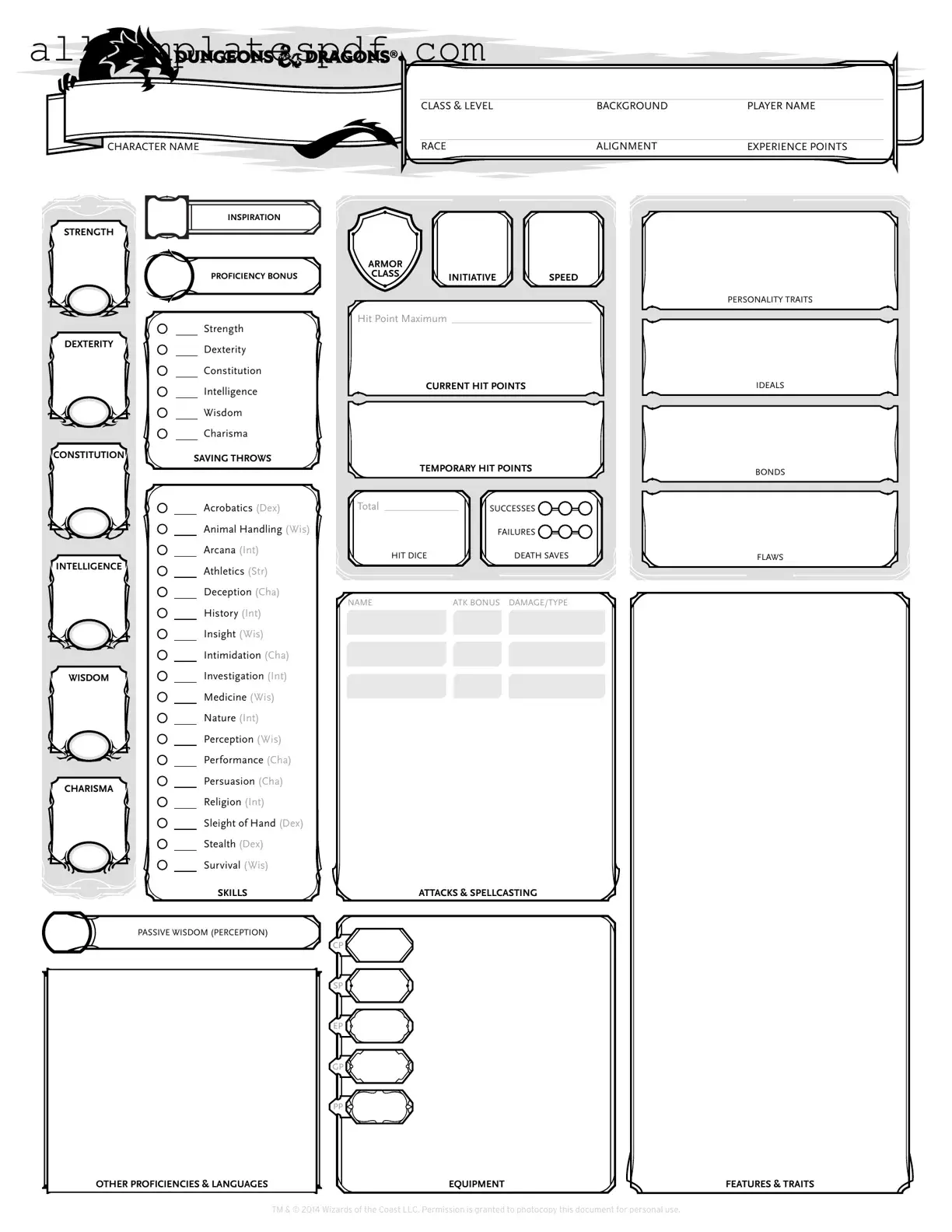Creating a Dungeons & Dragons character is an exciting part of the game, but mistakes on the character sheet can lead to confusion and frustration during gameplay. One common error is failing to accurately calculate ability scores. Players often forget to apply racial bonuses or penalties, which can significantly affect a character's performance.
Another frequent mistake is overlooking the importance of proficiency bonuses. Players sometimes forget to add these bonuses to their skill checks and attack rolls. This can make characters seem weaker than they truly are. Remember, proficiency can be a game-changer in critical moments.
Some players neglect to detail their character's background. This section is not just fluff; it can provide essential context for role-playing and interactions with other characters. A rich backstory can enhance the gaming experience for everyone involved.
Misunderstanding spellcasting mechanics is another area where players stumble. Some may fail to note the spell slots available or forget to track which spells have been prepared. This can lead to missed opportunities during encounters.
Additionally, players sometimes mismanage their inventory. Forgetting to list important items or failing to update the sheet after acquiring new gear can create chaos in gameplay. Keeping an accurate inventory helps maintain the flow of the game.
Another mistake is not fully understanding the character class features. Each class has unique abilities that can be pivotal in gameplay. Failing to utilize these features effectively can hinder a character's potential.
Players may also misinterpret the rules regarding hit points. Some forget to account for temporary hit points or healing effects, which can lead to incorrect assumptions about their character's survivability in combat.
Inaccurate alignment descriptions can create role-playing inconsistencies. Players should carefully consider their character's moral compass and how it influences their decisions in the game. Misalignment can lead to conflicts with party members.
Lastly, many players overlook the importance of updating their character sheet during the game. As characters level up or gain new abilities, keeping the sheet current is essential. An outdated character sheet can result in missed opportunities and confusion.
By avoiding these common mistakes, players can enhance their Dungeons & Dragons experience. A well-prepared character sheet not only improves gameplay but also enriches the storytelling aspect of the game.
